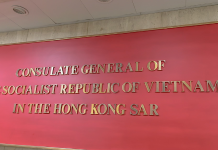
As a teenager, Lai studied at the Tang King Po School, a catholic vocational school which offered printing, shoemaking and tailoring classes at that time. Among these three, Lai was most interested in the printing industry, which was undergoing a boom time in the 1960s. Given his interest and with an eye on making a living, Lai chose to enter the printing class. Not only did the fathers in the school teach him techniques such as typesetting, printing and binding, but they also taught him how to repair missals. This became the foundation of his life-time work in book and document conservation. However, from 1995, his main focus shifted from Western-style thread-stitched books to Chinese-style thread-bound books.
Though he first entered the industry for mainly pragmatic reasons, his enthusiasm for and gratification from book conservation has grown steadily over the years. His devotion to his craft is heightened by the lack of successors. “Not many people are able to do this if I step down,” Lai says.
Today’s news is tomorrow’s history and while it is important to conserve the past, it is equally essential to preserve the present for the future. And, archives serve this function.
Although the concept of archive is lesser-known and some people mistake archives for museums, they serve an important function as repositories of the historical record. Yip Chun-man, Archives Manager at Manulife (International) Limited and a member of the Hong Kong Archive Society, says archiving is about keeping records rather than collecting artifacts. He gives an example of a watch. A museum may add the watch to their collection depending on its value whereas archivists would collect business records including the design of the watch and the purchasing orders for the parts.
“Those [watches] tell the story, but placing it in context is down to different types of documents. Only if the documents are well preserved can the display [watches] have substance.”
Within an organisation like Manulife, an archive is a collection of records created or received and are the evidence of business transactions.
But they can also document and record the history of governments, academic institutions, various communities and even individuals. “It also keeps track of a historical incident…this is the history of the organisation,” says Sarah Tam, treasurer and membership secretary of the Hong Kong Archives Society.
Sarah Tam thinks the ordinary documents of individuals, like bills and bank statements, can also reflect the social situations in any specific time and space. For example, receipts from the 1970s show that one catty of rice only cost about HK$3 at that time but now the price has more than tripled to over HK$10 for one catty. “Documentation is important and is not really far away from us,” Tam says.
However, she notes that archives are not common in Hong Kong. As there is no archives law in Hong Kong, private organisations do not have any general guidelines to follow to preserve their historical documents. But she thinks more organisations have started paying attention to archives in recent years, and she is positive about the development of archives in Hong Kong.
“History after all needs to be preserved. If not, when you do research in future, what will you get? You will have nothing to see, and this is not okay,” Sarah Tam says.
Edited by Grace Cheung








































